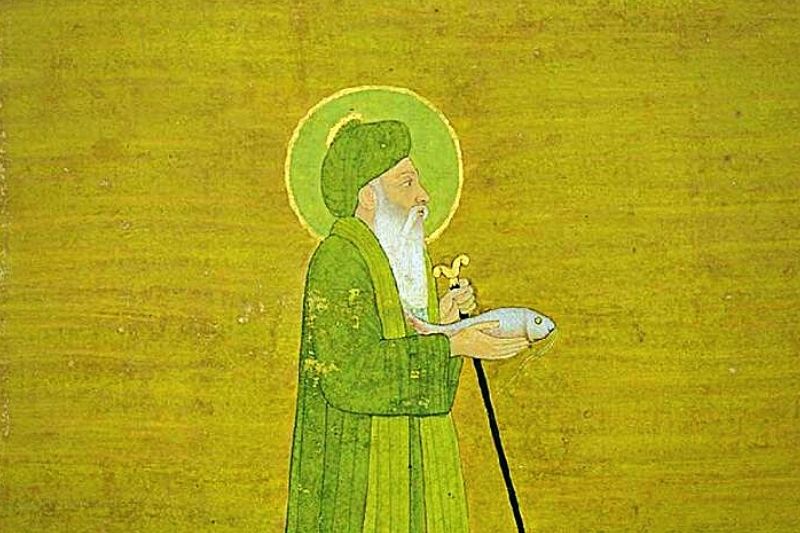One spring evening in Izmir, Turkey, I encountered a group of children jumping over burning logs in a vacant lot. They laughed as they took turns to leap across the flames. Initially I thought it was just spontaneous childhood mischief, but through the evening more people joined in. I asked a Turkish friend about it. ‘It’s Hidrellez,’ Murat replied. ‘Every year on May 6 we celebrate the arrival of spring,’

I was intrigued that in secular, urbanised Izmir people would come out to mark the turning of the seasons. In fact, Hidrellez events occur all across Turkey, from Thrace, Turkey’s foothold in Europe, to Samandag, in Hatay province bordering Syria. Recognising the resonance of Hidrellez in Turkey, and beyond, UNESCO lists it as an element of Intangible Cultural Heritage of Humanity. The Turkish Ministry of Culture and Tourism notes it as one of the most important seasonal festivals across the Turkic world.
The advent of spring is central to the celebration of Hidrellez. Associated ideas of rebirth and renewal appear in a diversity of traditions that Turks perform to mark the occasion. Turkish friends tell me of long-standing family rituals. Like many Turkish activities, communal interaction – sharing food, music and dancing – is paramount. Yet, it is also a time for individual reflection and for wish-making. This involves gathering symbols of new life – flowers, herbs, grains and seeds – and placing them under a tree or beside a creek. Wishes may be abstract – health, happiness, love – or material – a house, a car, wealth.
These traditions perhaps reflect the aspirations of modern Turks, but historically Hidrellez was linked to agricultural cycles. Folklorists Warren Walker and Ahmet Uysal documented an ages-old ritual where Anatolian farmers herded their flocks into the shallows of the Mediterranean in a quasi ‘baptism’ in the hope of enhancing the fertility of their livestock. Such a tradition may be thousands of years old.
The festival takes its name from the mythical figure of Hidrellez. Walker and Uysal argue that among Turks Hidrellez is the most widely revered Islamic personage after the Prophet Mohammed and Imam Ali, yet, he is accepted to be a conflation of two religious figures, El Khidr, an Islamic wali (saint), and Old Testament prophet Elijah (Elias in Greek). Based on analysis of ‘Oriental literary sources,’ early 20th century anthropologist F. W. Hasluck contended that theologians recognise Khidr and Elias as distinct personalities, but in the popular imagination they have become a single figure.
El Khidr’s name derives from the Arabic for ‘Green’ hence his association with spring, nature and fertility. He is attributed with many virtues, including being the patron saint of travellers and helping those in need. Georgius, a Hungarian enslaved in mid-15th century Turkey, observed that ‘Chidirelles’ was widely revered. ‘His esteem is so great,’ Georgius recorded, ‘that scarcely can anyone be found who has not felt his help.’ In the 1550s, Ogier de Busbecq, an ambassador to the Ottoman sultan, encountered a group of dervishes who told of ‘a hero called Chederlee, a man of great physical and moral courage.’
'Despite modern discourses that claim immutability and divisions between cultures, identities and ‘civilisations,’ the historical record reveals a litany of symbiosis and cross-pollination across religious and cultural boundaries. ... Khidr is one of the oldest figures of veneration in the Middle East, predating Islam and Christianity and the ancient Romans and Greeks. Ultimately, Hidrellez emerges from the interactions and melding of all these traditions.'
Such accounts document the Sunni Muslim embrace of Khidr, yet he resonates much further. Hasluck noted that Khidr was also revered by ‘the heretical Nosairi sect’ (now known as Alawites) and Kizilbas (Alevi) tribes of Anatolia. Yezidis know him as Khidr Ilyas, viewing him as a saint of water, health and healing. In the folklore of the Nogay and other peoples of the Caucasus, he assumes the form of a venerable wanderer who appears to guide lost travellers. In Iran, Zoroastrians associate Khidr with the ancient water goddess, Anahita, having reconsecrated some of her sanctuaries as shrines to Khidr. He has even crossed into literature, with one theory stating he was the inspiration for the Knight of the Green Coat in Cervantes’ Don Quixote.
Hidrellez is most commonly entwined with St George. The dervishes that de Busbecq met stated that ‘Chederlee’ was ‘identical with… St George.’ This association has been widely documented across Anatolia, the Balkans and the Levant. There is also an overlap in the observation of their respective festivals. St George’s Day is celebrated on April 23, marking the beginning of the fertile season in the old Anatolian calendar; this corresponds in the Georgian calendar with May 6, when Turks celebrate Hidrellez.
None of this should be surprising. Despite modern discourses that claim immutability and divisions between cultures, identities and ‘civilisations,’ the historical record reveals a litany of symbiosis and cross-pollination across religious and cultural boundaries. Walker and Uysal contend that Khidr is one of the oldest figures of veneration in the Middle East, predating Islam and Christianity and the ancient Romans and Greeks. Ultimately, Hidrellez emerges from the interactions and melding of all these traditions. So, on May 6, when Turks leap across burning logs or bury a handful of sunflower seeds, they are following the common impulse to celebrate the arrival of spring, but they are also partaking in a practice that has grown from the very soil of Anatolia and continues to ring through the ages.
William Gourlay teaches international relations and Middle East politics at Monash University. He has previously worked as a teacher, editor and journalist in London, Izmir (Turkey) and his native Melbourne. He is the author of The Kurds in Erdogan's Turkey.
Main image: Al Khidr (Wikicommons)